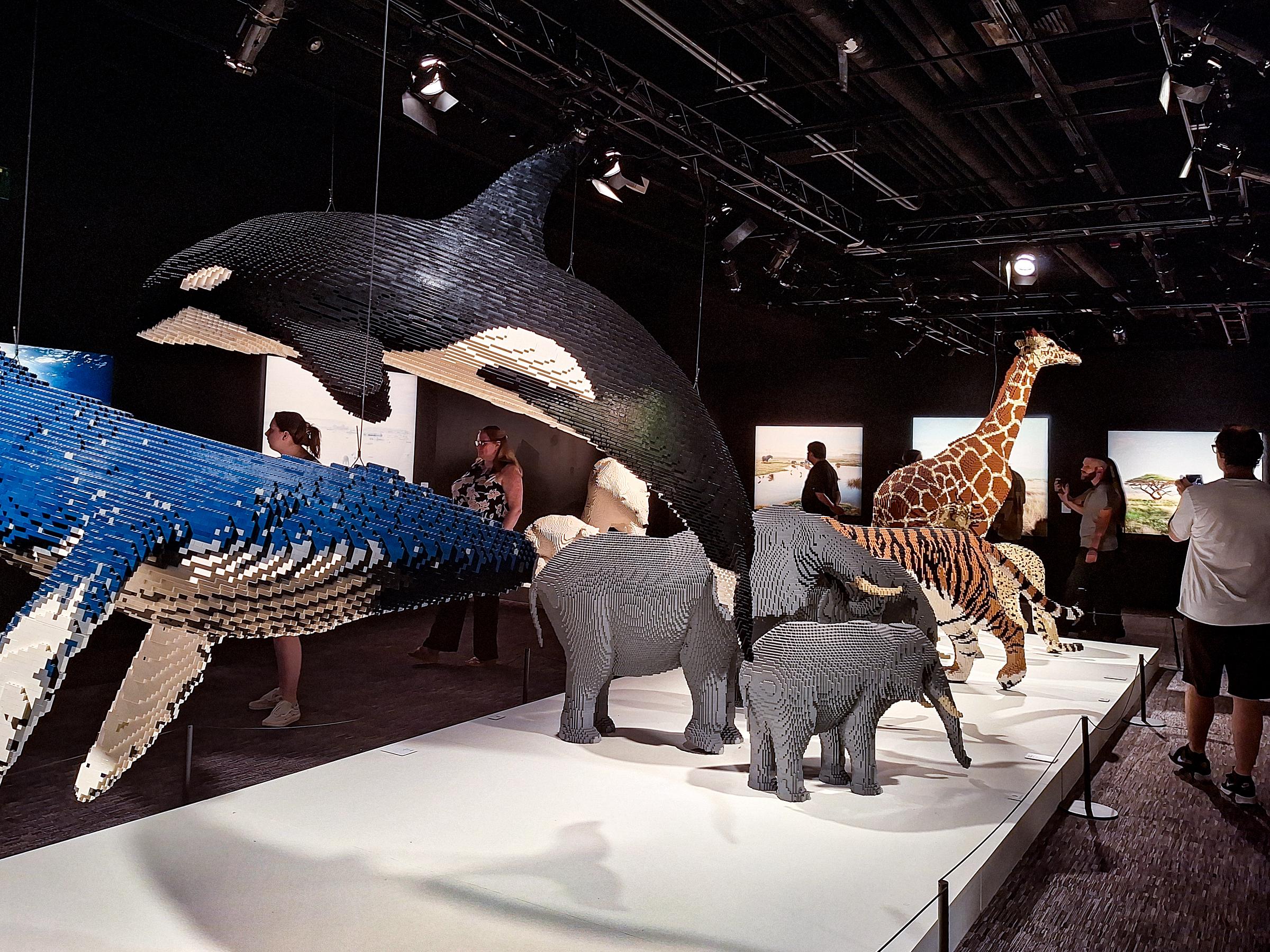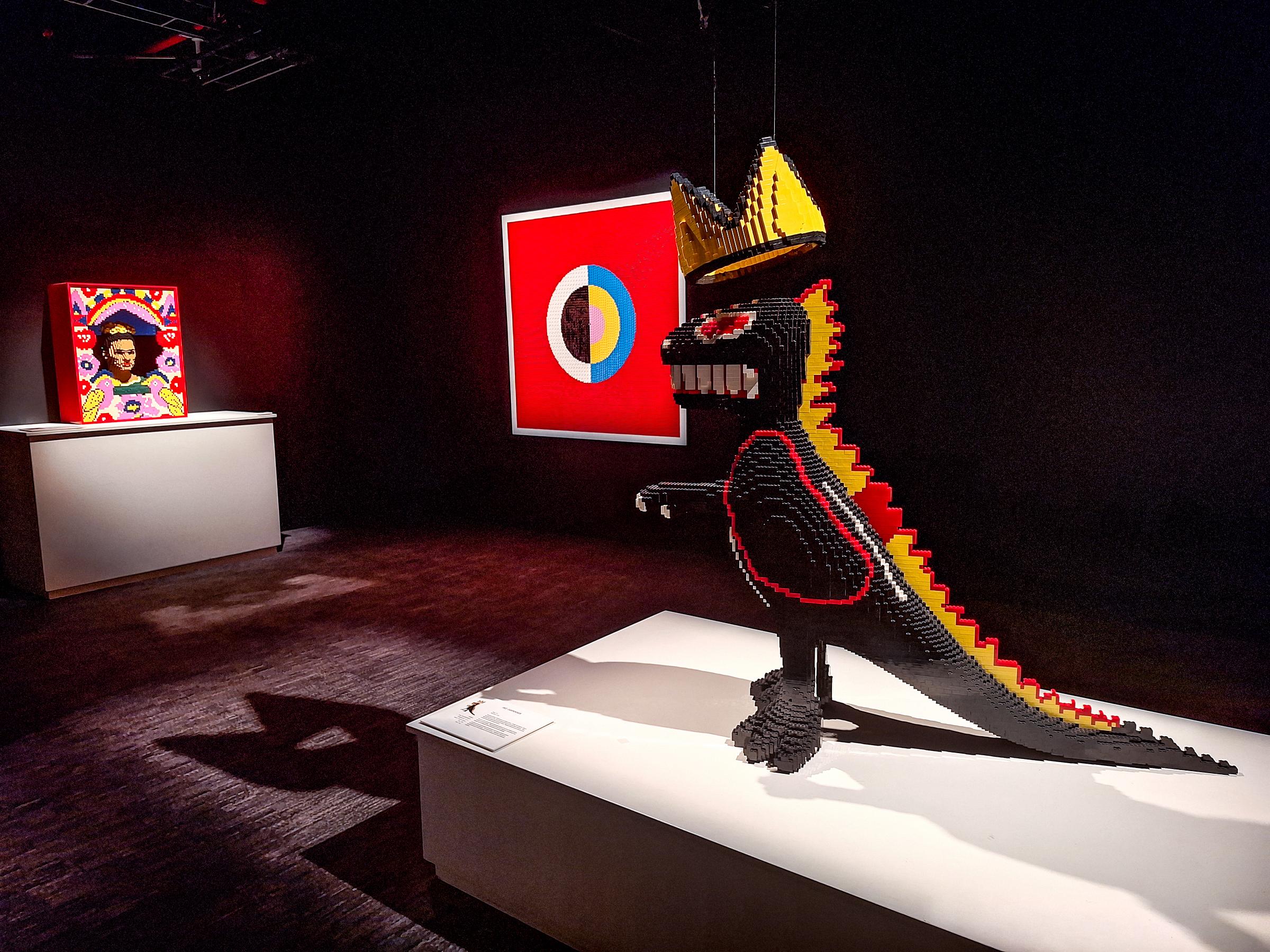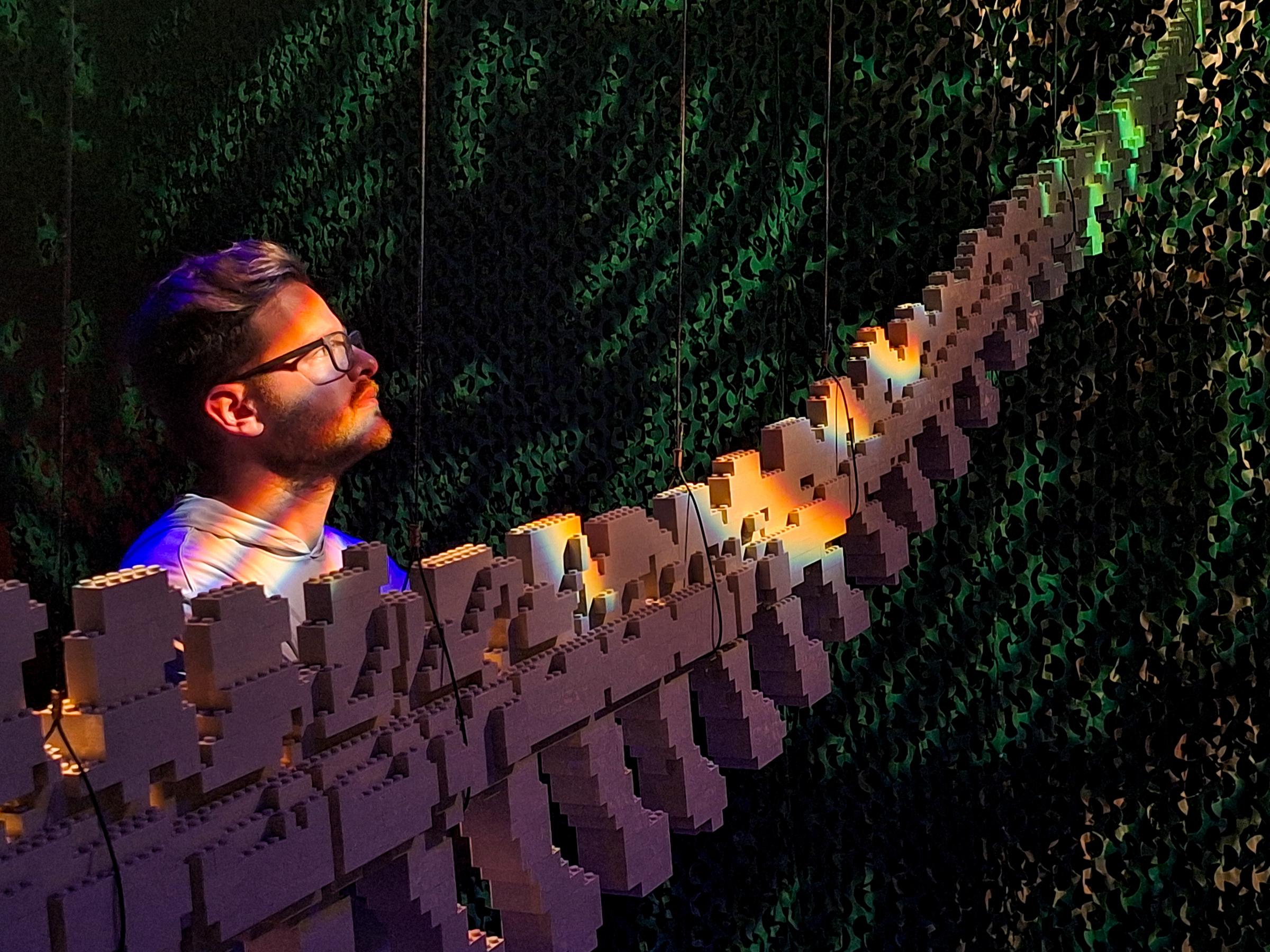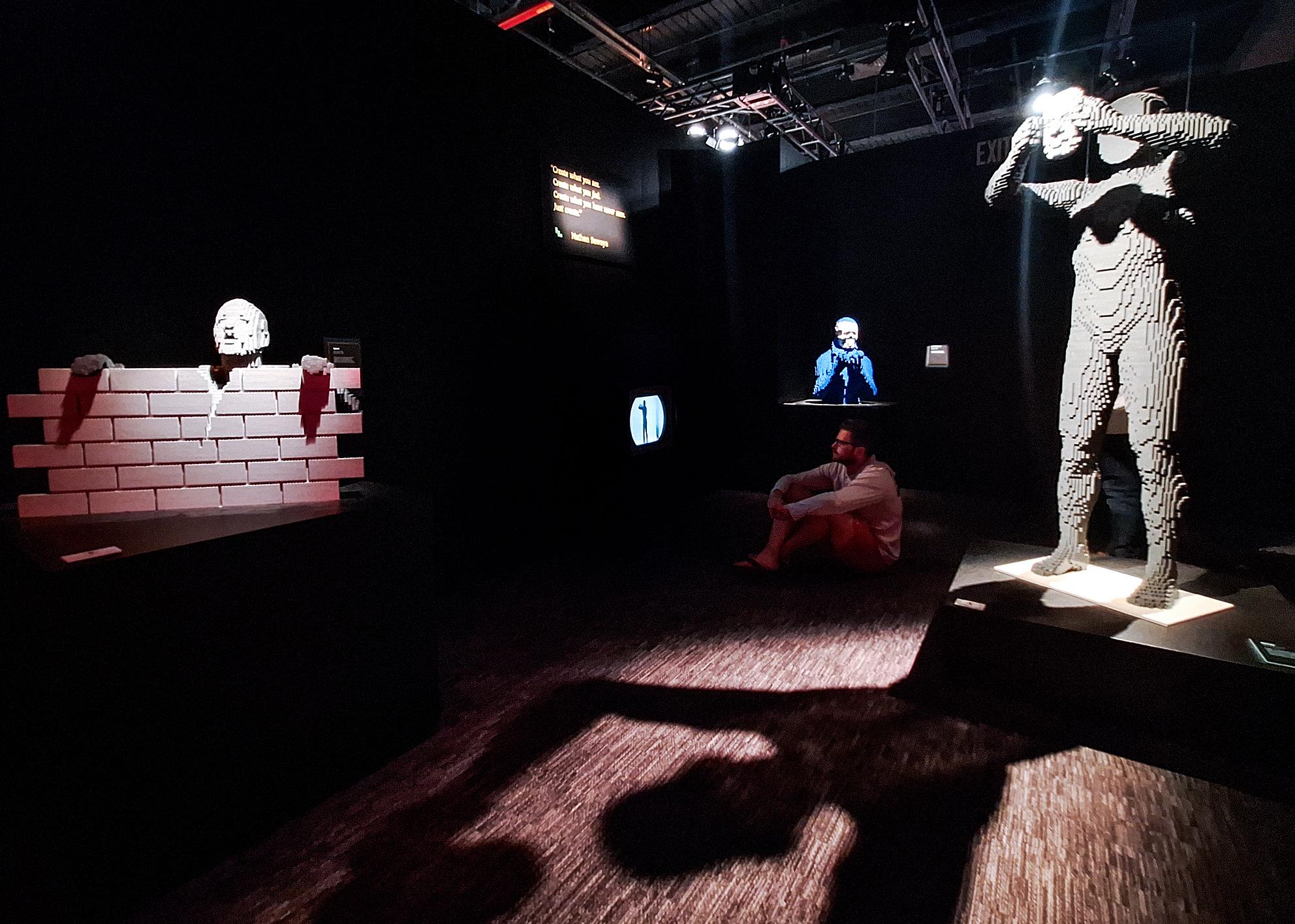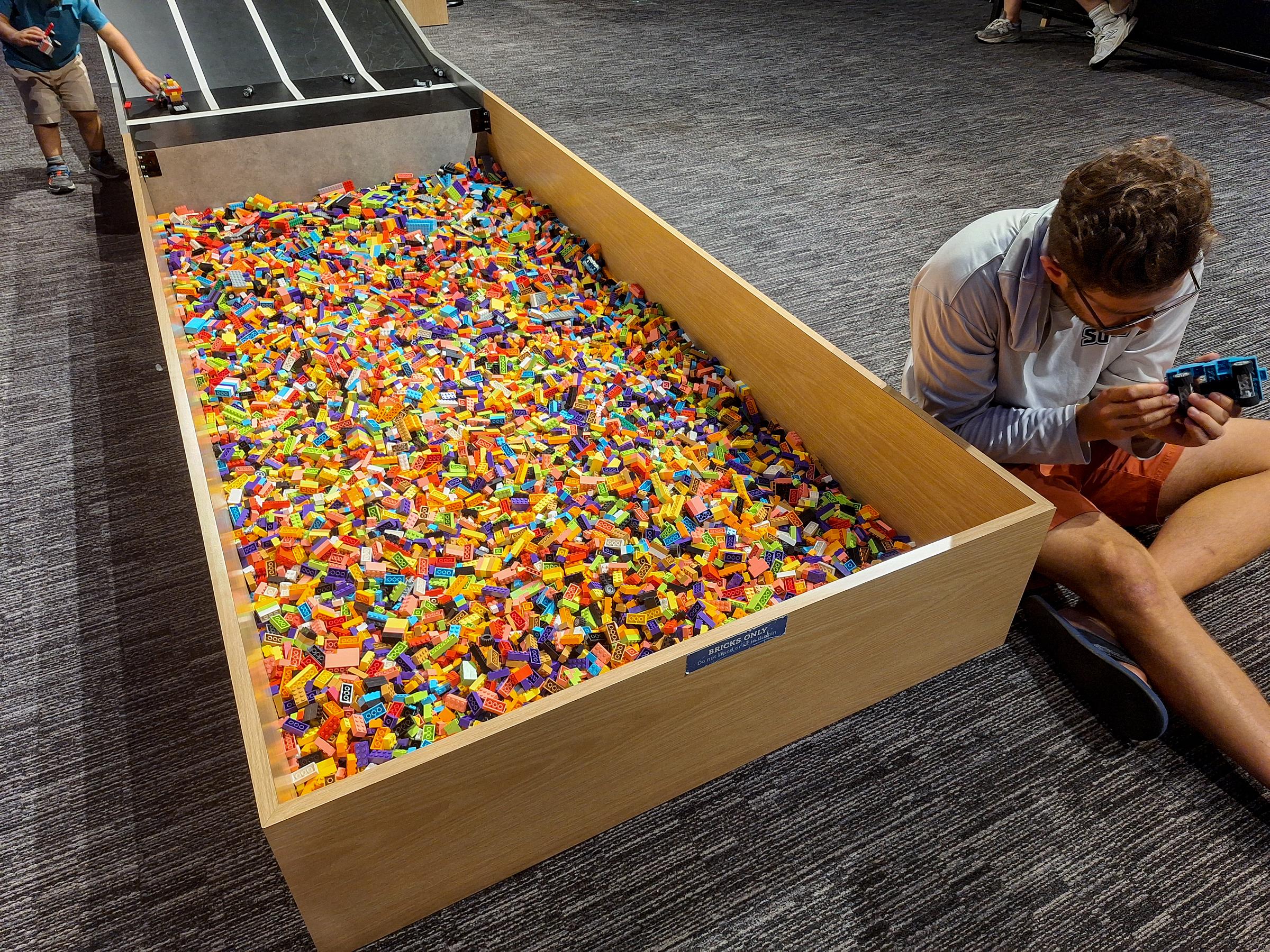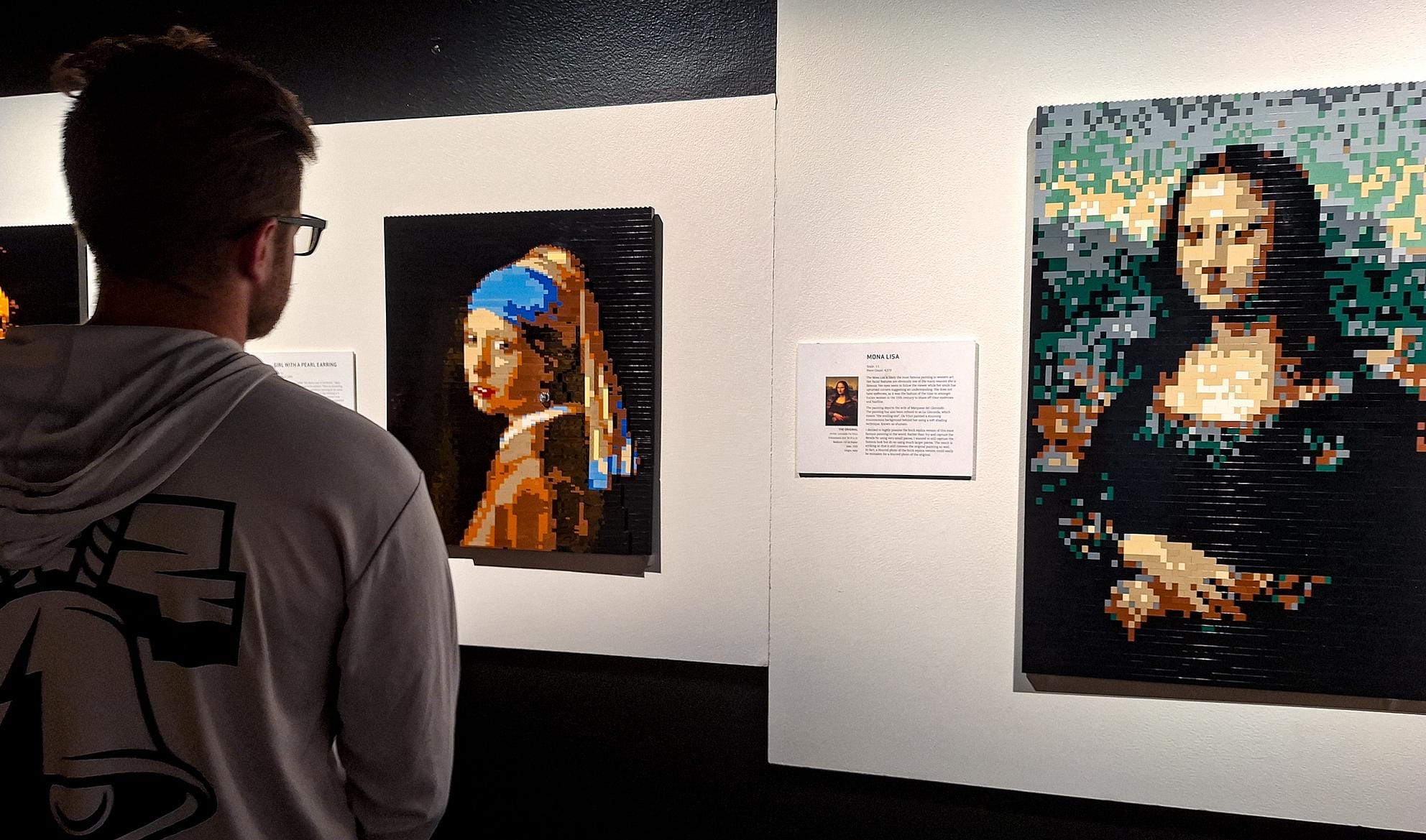Art Of The Brick
The Franklin Institute
222 N 20th St.
Philadelphia
Aug. 12, 2024
I’m not sure quite what I expected as we walked into the Franklin Institute’s “Art Of The Brick” exhibit — “the world’s largest display of Lego art ever,” according to the museum’s website.
I had anticipated something along the lines of a superlative showcase of competing plastic sculptures à la “Lego Masters.” Though the staple childhood toy has become larger than life in recent years, through developments like the Lego Movie film franchise and Legoland amusement parks, this latest show turns the spotlight towards a single artist — Nathan Sawaya.

Sawaya’s work, both innovative and classic, legitimizes the brick as something bigger than a toy; and his creations, in turn, have paved the way for other artists to continue elevating the Lego into even larger-scale art.
The first few rooms in the exhibit feature Sawaya’s recreations of famous works of artworks: The Mona Lisa by Da Vinci; the Pez Dispenser by Basquiat; a replica of a Moai Head. Most of the paintings were relatively two-dimensional, effectively breaking down the iconic images into bulky pixels which turn closer into the famous works as you walk further away from the sculptures. For other paintings, Sawaya elevates parts of the 2D renderings – and I mean elevate in the literal sense, bringing borders onto another plane or fully building out the abstract lines into tangible blocks. Other times he brought the subjects out of their native sceneries entirely, reimagining them as fully three dimensional. I enjoyed seeing these new depictions of artwork I already loved recreated in such an atypical and unforgiving material. As we turned into the next gallery of full bodied, 360°, to-scale Lego copies of Greek statues and other historical art, I was mesmerized by his ability to capture the curves, depth, and scale of his source material using just the basic everyday Lego bricks that all kids play with. Considering that most of us rely on step – by-step kits to build lego creations, Sawaya’s skill for breaking away from the blueprint stands out.
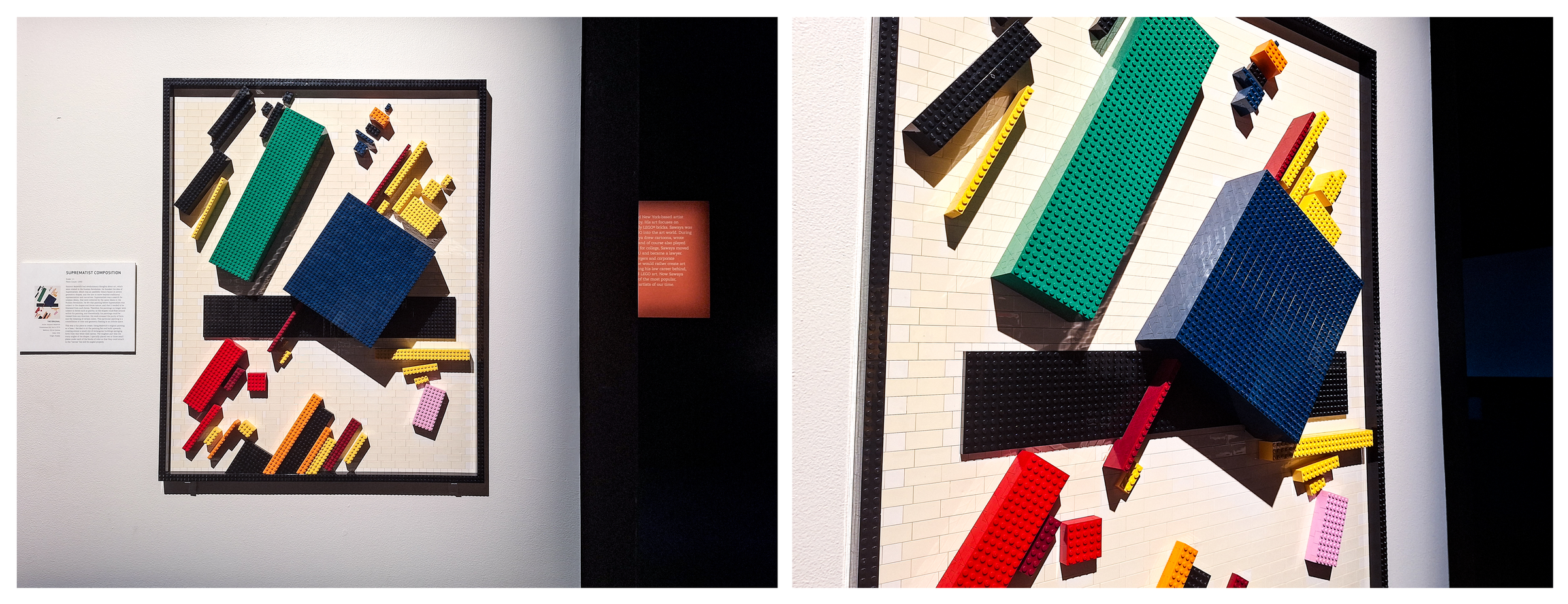
My awe turned to skepticism as we moved onto displays of the artist’s original interpretations of human form. I wasn’t convinced by the proportions of Sawaya’s figures. The stated goal of the artworks were an homage to the human body, but what I saw were oddly proportioned figures with torsos too short for the length of the legs or arms being too narrow based on the rest of the sculpture’s body. I was particularly put off by the gallery’s captions, which felt very “first year of art school” in their basic, vague, and overly flowery nature. However, I did appreciate the video within a gallery which documented Sawaya’s installation process through a time lapse of that particular gallery’s central sculpture morphing into itself one brick at a time. But I was left wanting to learn more — wishing for even more videos, perhaps detailing Sawaya’s strategic approach to producing these grand works of art, from conception and design to the build.
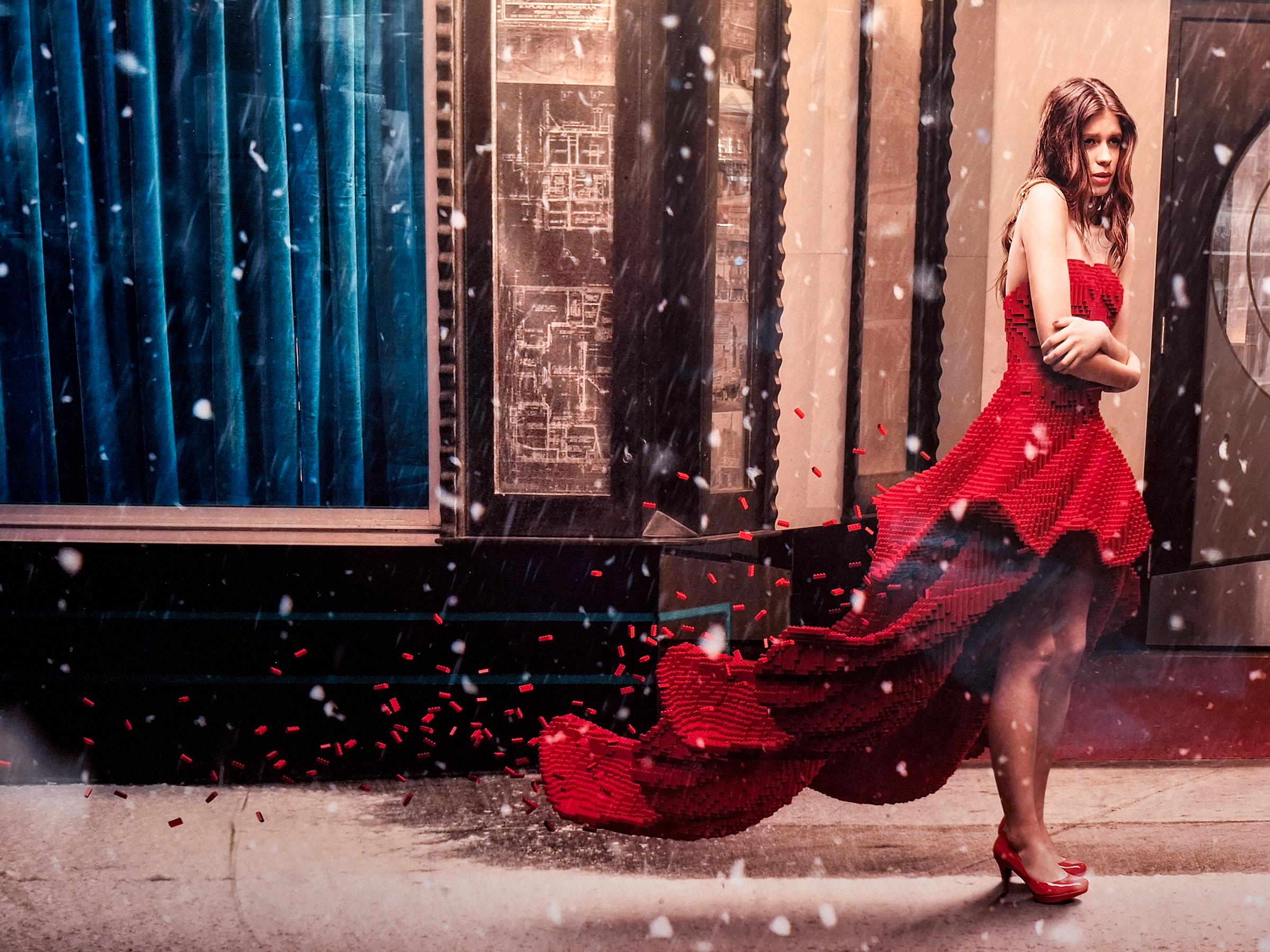

The exhibit concluded with a collaboration between Sawaya and Dean West, a highly-stylized photographer known for his production of poppy composite images. Together, the duo developed tableaus, replacing everyday objects with their Lego counterparts, such as the bright red dress on a model, or the dog a woman is walking, or the towel hanging next to a swimmer. The lego works, which were then displayed in the center of the gallery surrounded by their accompanying large scale scenic images, are noticeably more simplistic in their color variation than his famous painting recreations. But this level of basic color variation and the ordinariness of the objects contributed perfectly within the final composite image, making an otherwise mundane photograph elicit a second or third prolonged look at both the final image and the Lego art displayed.
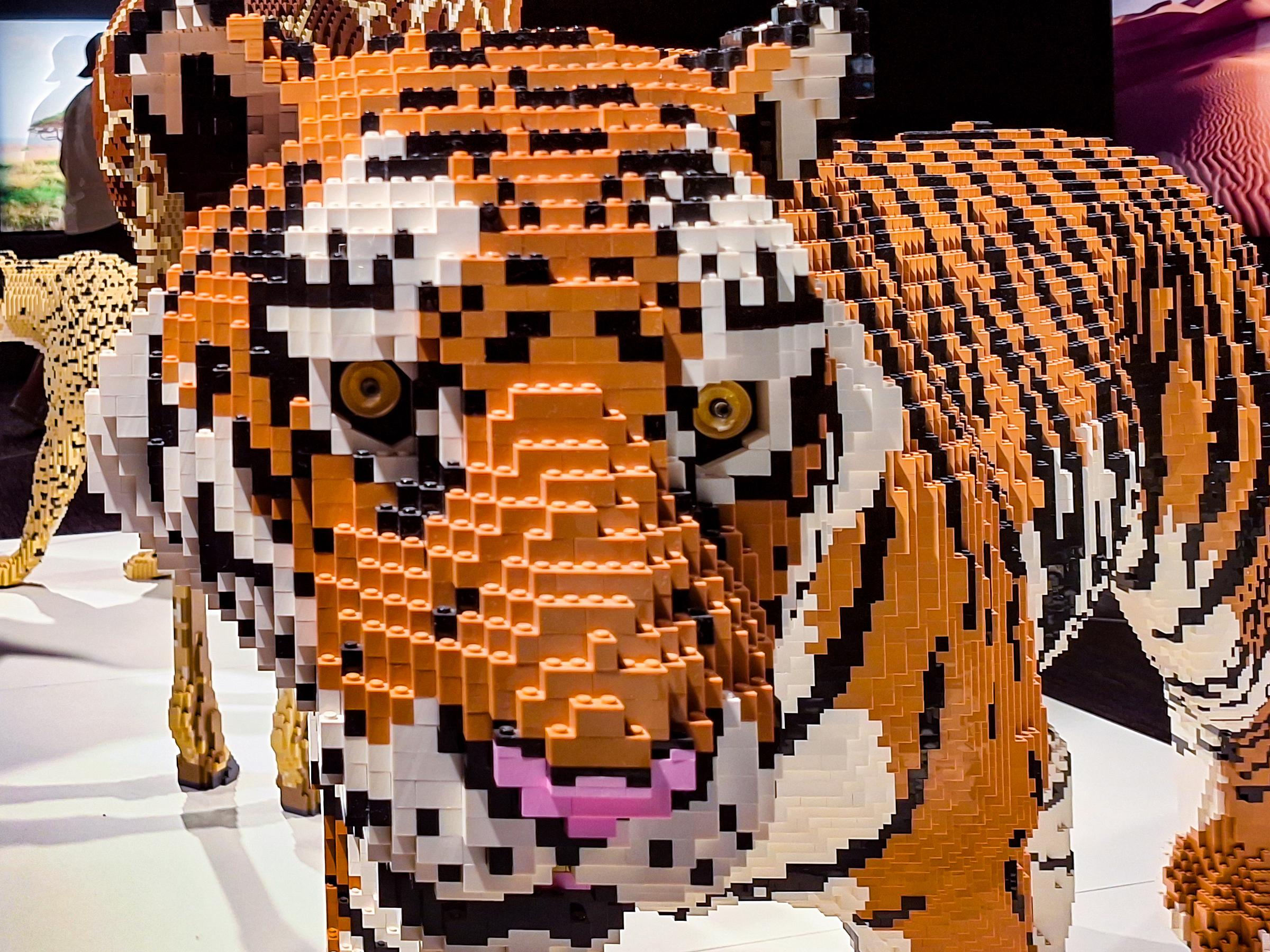
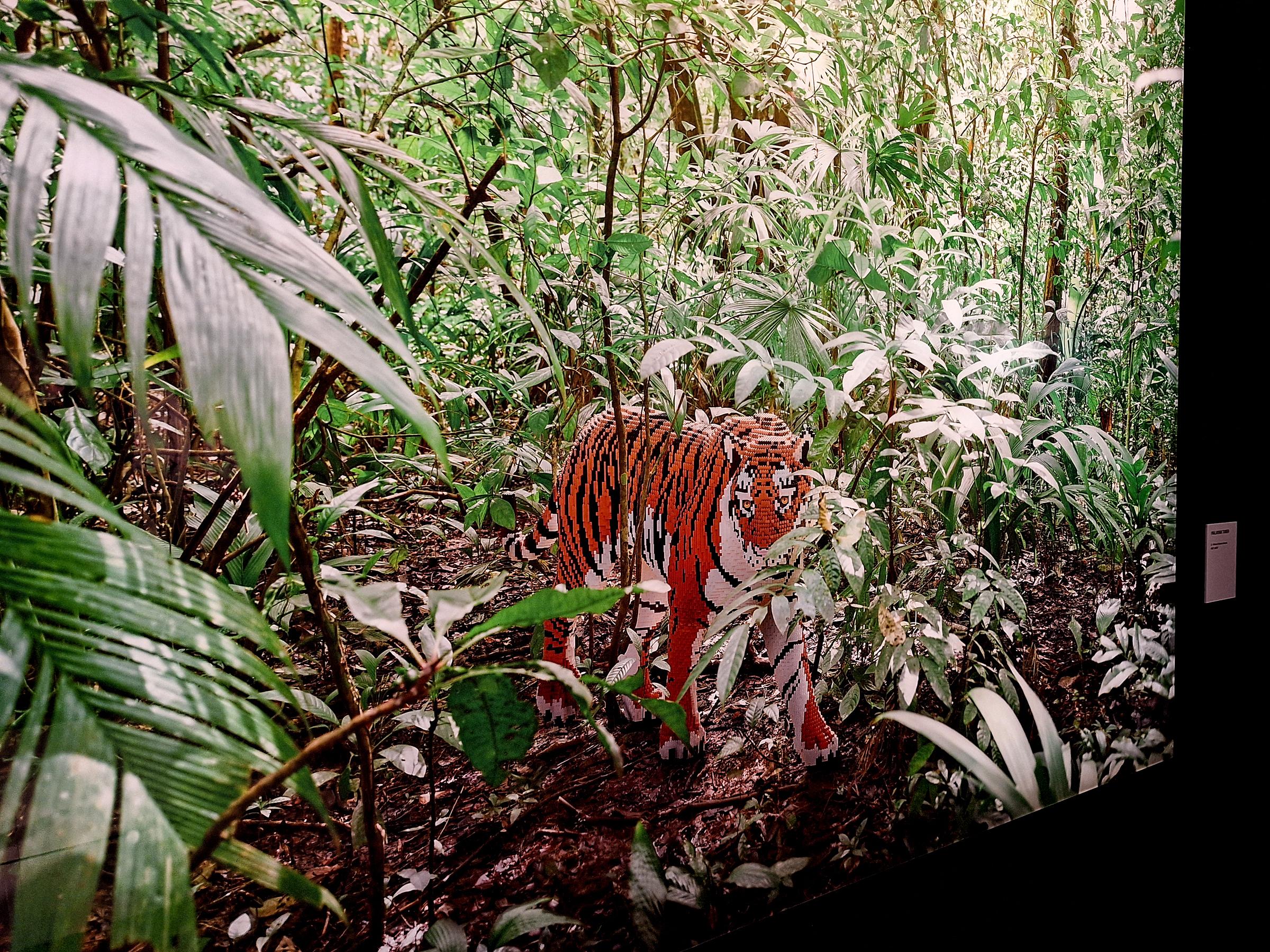
I think Sawaya and West achieve their most successful work, and my favorite works of the show, in the next and final full gallery of sculptures, working together to create National Geographic-inspired images of wild animals in their natural habitats. The photographed scenes are so intricate that they look like rare snapshots until you step a little closer — and realize the subjects never felt a heartbeat, let alone killed an antelope. These Lego sculptures were the most convincingly depicted sculptures of the show: Sawaya nailed the depth of the patterns and forms of the wild animals he sought to recreate for the composite images. Of the whole show, these were the first creations I would’ve bought a print of in the gift shop if offered, besides maybe one or two of the famous art recreations.
As promised at entry by a museum docent, visitors got a chance to get their own hands on some Legos at the exhibit’s end. While I watched several kids and their adults — as well as my husband — toying around with the modest plastic bricks, creating jagged cars and imagined townships, I couldn’t help but feel like the museum lost an opportunity to demonstrate the wide ranging inventiveness and individuality that Legos so often inspire. While I was impressed by Sawaya’s keen eye and technique, after observing mirror recreation after recreation, it started to get repetitive. The art show honored the ubiquity and pop art potential of the Lego — but I’d like to see more examples of how the Lego has served artists in establishing their own sense of originality. In other words, beyond commercial legacy, I’d like to look to artists beyond Sawaya to find out: how can we continue building with the materials we’re given.
NEXT:
“Art Of The Brick” remains on display through Sept. 2. They offer weekend night time hours as well for the price of just the special exhibit, which is half the cost of a daytime visit.
